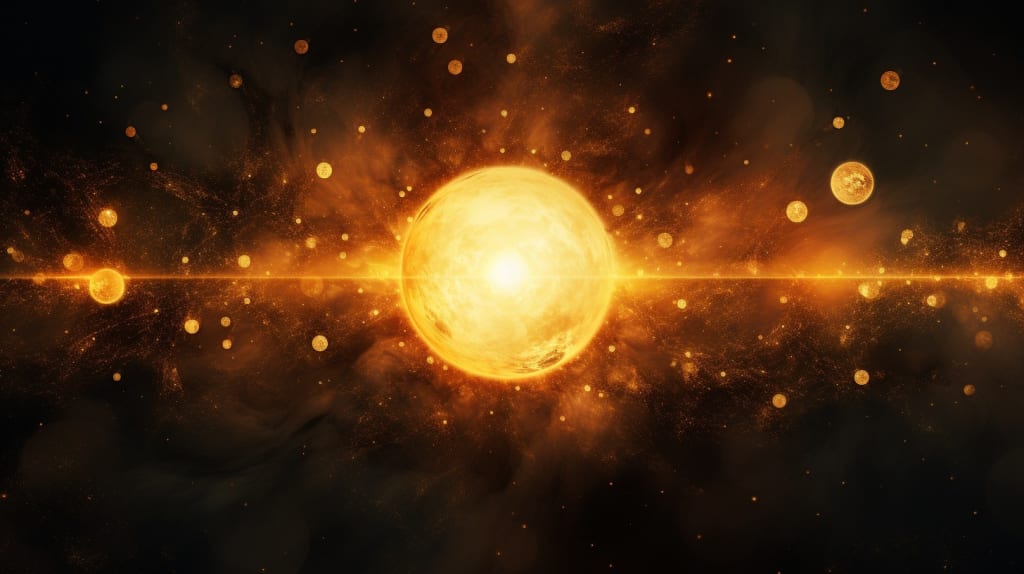
Our solar system might seem ordinary, but did you know there are some really strange systems out there with more than one star? Unlike our Sun, which is a solo act, most stars in space like to have a buddy. Imagine if we had two suns in our sky – it would be pretty wild! And think about how the planets would have to move to make that work. Some places actually have three or even four suns! The way the planets move around in these places is like a tricky dance.
In a recent show, they talked about these cool places with more than one star. In some systems, two stars twirl around each other like best friends holding hands and spinning. The planets then go in circles around both stars, making a special kind of path called a "circumbinary orbit." Take the BEBOP-1 system, for example. It has two big planets that go around two stars in a way that looks like the planets in Star Wars. It's interesting for scientists because it's bright, and they can learn more about planets that go around two stars.
Now, if you add one more star, making it three in total, things get even more complicated. Sometimes one star can get kicked out, or the whole system might fall apart. But there are places where planets orbit just one star while that star is also part of a pair that goes around together. The Alpha Centauri system is like that. It has three stars, but the planets are around the smaller one. It's kind of like having two suns and one smaller, bright star if you were standing on a planet there.
Guess what? There are even systems with four stars! Some people who aren't scientists found one using data from space telescopes. These citizen scientists, who just like looking at space, found a planet going around two pairs of stars. It's like a quadruple star dance up there! If you were on a planet in that system, you'd see two suns and one very bright star that's actually two stars close together. It's like how some stars we see from Earth are actually groups of stars.
Scientists are still figuring out if planets can live in systems with five or more stars. There are systems out there with that many, but it's not clear if planets can be there too. It's hard for scientists to find all the stars in these busy systems. Sometimes they even miss one for a long time, like in a system with five stars. But scientists keep looking because who knows what they might discover next?
In the end, our solar system with just one star works perfectly fine for us. But it's fun to learn about these other systems with many stars, where planets have to do a special kind of dance to stay in orbit. Each discovery opens a new chapter in our understanding of the amazing and sometimes puzzling universe beyond our home planet.
In conclusion, the exploration of multi-star solar systems takes us on a fascinating journey beyond the familiarity of our single-star solar system. These celestial arrangements, with their intricate dances of stars and planets, challenge our understanding of the cosmos and open new avenues of discovery.
Whether it's the binary systems where two stars twirl like best friends or the more complex trinary systems, each configuration offers a unique perspective on the vastness of space. The BEBOP-1 system, with its two gas giant planets orbiting two closely-knit stars, stands as a shining example of the wonders that await our exploration.
Citizen scientists, driven by a passion for space, play a crucial role in unraveling the mysteries of these multi-star systems. The discovery of a quadruple star system with a planet, made possible by these enthusiasts, highlights the collaborative nature of space exploration.
As we venture into systems with five or more stars, the challenges of detecting all the stars and understanding the dynamics of planets become apparent. Yet, scientists persist in their quest for knowledge, knowing that each new revelation contributes to our comprehension of the universe.
It's time for us to say goodbye. Thank you for being awesome! Drop your questions, comments, and likes and make this place lively and fun.
Stay curious and keep being amazing!
Goodbye for now, and until our next journey together!!
About the Creator
Digi Ben
Welcome to the world of insightful and engaging articles! Whether you're seeking in-depth analyses, practical guides, or entertaining narratives, my articles here are tailored to cater to diverse interests. Stay tuned!






Comments
There are no comments for this story
Be the first to respond and start the conversation.